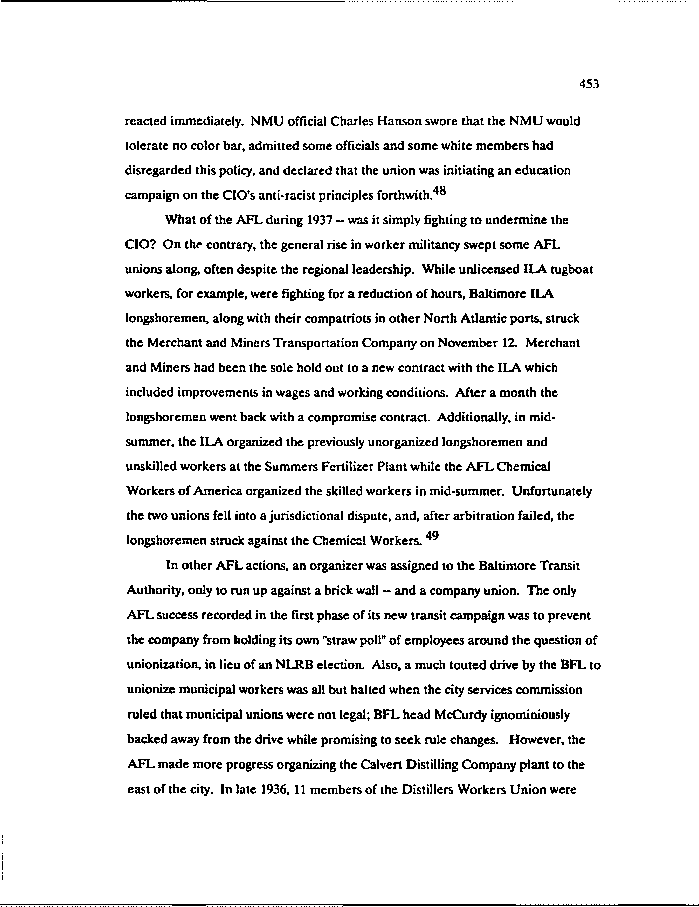|
453
reacted immediately. NMU official Charles Hanson swore that the NMU would
tolerate no color bar, admitted some officials and some white members had
disregarded this policy, and declared that the union was initiating an education
campaign on the CIO's anti-racist principles forthwith.4**
What of the AFL during 1937 - was it simply fighting to undermine the
CIO? On thf contrary, the general rise in worker militancy swept some AFL
unions along, often despite the regional leadership. While unlicensed ILA tugboat
workers, for example, were fighting for a reduction of hours, Baltimore ILA
longshoremen, along with their compatriots in other North Atlantic ports, struck
the Merchant and Miners Transportation Company on November 12. Merchant
and Miners had been the sole hold out to a new contract with the ILA which
included improvements in wages and working conditions. After a month the
longshoremen went back with a compromise contract. Additionally, in mid-
summer, the ILA organized the previously unorganized longshoremen and
unskilled workers at the Summers Fertilizer Plant while the AFL Chemical
Workers of America organized the skilled workers in mid-summer. Unfortunately
the two unions fell into a jurisdictional dispute, and, after arbitration failed, the
longshoremen struck against the Chemical Workers.49
In other AFL actions, an organizer was assigned to the Baltimore Transit
Authority, only to run up against a brick wall — and a company union. The only
AFL success recorded in the first phase of its new transit campaign was to prevent
the company from holding its own "straw poll" of employees around the question of
unionization, in lieu of an NLRB election. Also, a much touted drive by the BFL to
unionize municipal workers was all but halted when the city services commission
ruled that municipal unions were not legal; BFL head McCurdy ignominiously
backed away from the drive while promising to seek rule changes. However, the
AFL made more progress organizing the Calvert Distilling Company plant to the
east of the city. In late 1936, 11 members of the Distillers Workers Union were
|

